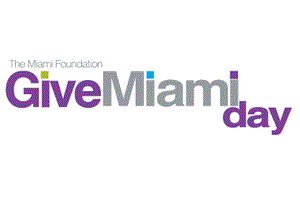Paul Schervish has no doubt that despite the downturn from 1999-2001 and the “Great Recession” of the last several years, the predicted wealth transfer of $41 trillion — “or whatever that number is inflated to today’s dollars” – will have occurred during the years predicted (1998-2052). Part of the reason is that, despite 10 recessions since 1950, average real growth in personal wealth has been greater than 3 percent while the $41-trillion projection is based on 2 percent.
“It is unclear given the estate tax regulations whether what we predicted would go to taxes is going to occur but it depends upon the decision on the estate tax,” said Schervish, who as director of the Center on Philanthropy at Boston College and predicted the wealth transfer in a 1999 paper with research associate John Havens.
Some trends might affect the overall transfer to a degree. There’s been a growing inclination for donors to give away their money before death. Giving to bequests was fairly steady for 20 years, and now the amount going to foundations has grown dramatically, Schervish said. “Which is part of the answer — people are giving more to their foundations earlier on in life,” he said.
There’s been a remarkable change in giving to foundations over the years while surprisingly small gains in bequests, indicating a shift to lifetime giving. “Is the wealth transfer occurring, even with that lifetime giving, not keeping it for bequests? Yes,” Schervish said, noting the amount expected to go to heirs alone by 2017 will equal the $12 trillion predicted would go to heirs, taxes, and bequests by that time.
Not as optimistic is Frank Minton, senior advisor for Cambridge, Mass.-based PG Calc. “I don’t mean to say that a significant amount of wealth will not be transferred; it will,” he said, but given the economic slowdown the past several years, there simply is less wealth than before.
The dip in the economy has sparked more of an inclination by donors to do revocable gifts rather than irrevocable gifts, according to Minton, who’s seen a decline in the number of charitable remainder trusts and other life income planned gifts.
One thing that has not changed, he said, is that every person of means thinks about what’s the right amount to leave their children. On one hand, he said parents aim to give the gift of a quality of life, while also not destroying their children’s incentives. “What’s changed for many people is that there are less total assets,” he said.
Phyllis Freedman, president and CEO of SmartGiving, a planned giving consultancy in Washington, D.C., said her clients are reporting average bequests have declined considerably the past couple of years. That could be a result of the economy, with stock portfolios declining, but also people living longer and spending down assets more than in the past, she said.
What about the kids?
Research shows that if it’s a small portion of assets, most children are happy their parents give a gift to charity, Freedman said. “It doesn’t have to be all or nothing,” she said. “We still have that opportunity with Baby Boomers, who are now becoming primary planned giving focus.”
Freedman believes that if a bulk of assets are still going to heirs and loved ones, most children won’t quibble about a slice going to a good cause, especially if they’re involved in the decision making. “In the planned giving profession, we need to communicate that message over and over again, and talk about different kinds of gifts and gift types that can benefit heirs and nonprofits,” Freedman said.
Organizations understand family comes first, but donors can take care of loved ones and causes they love at the same time. “A lot of organizations are starting to focus on that kind of messaging more,” Freedman said.
“We (planned giving professionals) didn’t do a good job of explaining to donors how they could have their cake and eat it too; how they could make a gift to charity and at the same time leave the bulk of their assets to heirs,” Freedman said.
Billionaires can provide amply for their children and still give a substantial amount to charity, but it’s more difficult for someone of more modest means with children, according to Minton. “Then, it’s how much do you leave the kids and how much for charity? That gift might have more impact on the lifestyle of the children,” he said.
Fundraisers for The Nature Conservancy (TNC) are encouraged to ask donors about things like how much is enough to leave for their kids. “We have a lot of very productive conversations with donors who will tell you quite openly what they want to leave to their kids, what they’re thinking about leaving to charities,” said Greg Sharkey, senior philanthropy advisor for the Arlington, Va.-based nonprofit. “By getting them involved in these pretty deep conversations, often times, they express their desire to support these organizations and causes beyond their lifetime,” Sharkey said. “I and many colleagues always encourage our donors to share their future plans with children and explain why — why they’re doing what they’re doing — so no one’s surprised down the pike,” he said.
The Conservancy doesn’t have a specific program targeted to children, said Sharkey, but as part of the overall effort with donors, fundraisers work with donors’ children when they see an opportunity. Sometimes that’s through a personal visit from staff around the country or an invitation to an event in their region.
The Conservancy sometimes helps to use philanthropy as a teaching tool when meeting with donors who have young families. “We have a couple of colleagues who will go in and help a family develop a mission statement for their family or share some basic ideas of how to involve their kids in their charitable giving,” he said.
“It’s good for parents to involve their children in the process, and to discuss their charitable objectives,” said Minton. “Sometimes parents simply do not reveal contents of their will or estate planning. It’s understandable that they choose not to; they want to be able to make changes and not arouse expectations. On the other hand, insofar as one can involve children and see this as a family gift, I think that is better,” he said.
Minton recalls an instance when he was working with a woman in giving a large, outright gift to charity. He suggested that the woman involve her two sons and participate in the discussions about the purpose of the gift, so that “they took ownership of it.”
When talking to donors, Minton suggests helping them think of their legacy in a broader sense, not just their children and a monetary legacy, but the community in which they reside.
Rebecca Locke, senior director, gift planning, at the American Red Cross, said talking to different generations requires fundraisers to understand where they’re coming from. For instance, the World War II generation has a lot of confidence in institutions and consequently has been happy to leave organizations with assets in their estate plans that are not designated. “We know them very well and know how to talk to them and typically what they’re interested in,” she said. It’s easy to start a discussion with an 80-year-old about the importance of estate planning, Locke said, but there are differences in how to have that conversation if it includes their 50-year-old children.
The Red Cross offers a guide to estate planning that allows donors to organize their estate plan, putting in one place key information like bank account numbers, attorney details and where to keep their will. For several years, the organization marketed the guide exclusively to the World War II generation. Last year, the Red Cross began marketing it to Baby Boomers, with a message that donors can request copies of the resource kit for people they know who might need it.
“We want to supply those to Baby Boomers as well, and perhaps who have parents, family members, or friends in an older generation who have not planned either,” Locke said. In March, 2009, the Red Cross mailed the piece to 182,000 donors ages 50-59, with 1,200 unique donor resources. About 15 percent requested an additional copy for a loved one; 22 percent via the Web; 60 percent downloaded. “It was a lesson to us for making sure we have messages that are friendly to a range of ages and answers,” she said. NPT











